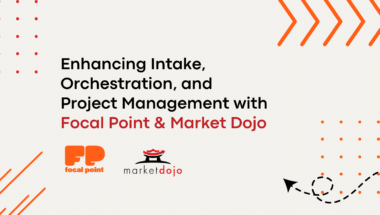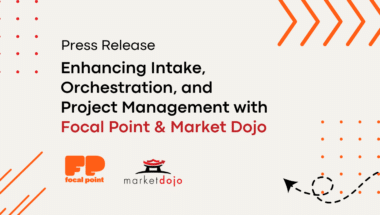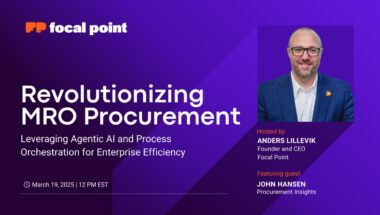New procurement tools drive value through efficiency. Are enterprises ready to take advantage?
No two digital transformations are the same. When organizations consider the ways in which digital transformation can reshape their operations, they may be thinking on a small scale or on a large scale — making technical improvements to an individual business function or overhauling every aspect of their operations with AI and automation. Digital transformation also takes place at different paces, with some companies taking years to move away from manual processes while their competitors move rapidly towards comprehensive automation and digitization.
No two organizations are at the same point in their digital transformation journey, and no organization’s business units are completely consistent in their level of technology or automation.
Procurement is a business function that offers massive potential for digital transformation and optimization. Previously managed using mostly spreadsheets, emails and manual calculations, new procurement tools make it possible for organizations to automate the processes of sourcing, obtaining and organizing their necessary goods and services. Innovative platforms like Coupa have provided the process and data layers, allowing organizations to integrate essential processes such as AP/AR and basic vendor management.
In recent years, a new generation of procurement tools are pushing the industry forward and providing new levels of insight and procurement orchestration for large enterprises. But in order for businesses to take advantage of these functions, they must identify where they are in their procurement transformation and take the right steps accordingly.
Procurement’s first Revolution
A decade ago, the majority of large enterprises relied on spreadsheets to organize and manage their procurement processes. While spreadsheets could automate specific calculations, each transaction required manual data entry — a process that was both tedious and prone to human error. As new platforms for customer relationship management and data storage gained popularity, it’s no surprise that dedicated solutions emerged for procurement as well.
The first generation of digital procurement solutions essentially provided a data layer for large enterprises. Solutions offered moved the basic organization and management of procurement processes to the cloud and connected some essential data points. Today, these platforms have been adopted by a significant number of Fortune 1000 companies. Cloud procurement platforms deliver a highly valuable resource to enterprises: a rich store of data harvested from millions of individual procurement actions. But despite the high costs of these solutions, they stop short of providing the type of workflow, insights and analytics that could drive further value and ROI for companies. Procurement’s second revolution is seeing technology unlock that information and driving both cost savings and a larger strategic advantage.
The New Age of Procurement
Historically, large organizations have looked at procurement as a cost center. Identifying and sourcing the things needed to operate a large corporation simply functioned as a major budget item — something to be contained rather than optimized or leveraged for any kind of strategic competitive advantage.
Procurement’s second technology revolution offers a new approach. Instead of viewing procurement as a line item to be absorbed, new insights can deliver efficiencies and significant strategic insights that affect both the top and bottom line. The new generation of procurement technologies break existing data out of silos and perform analysis to indicate where opportunities can be found in the company’s operations and help manage those opportunities through execution. Over time, these process refinements can deliver significant cost savings, risk reduction and even help organizations to achieve ESG and DE&I benchmarks by identifying diverse and socially responsible vendors.
New procurement solutions are particularly attractive as companies navigate economic pressures. Analysis tools that integrate with an organization’s existing data layer have the potential to drive massive increases in ROI of existing procurement software solutions. These dramatic cost savings can help enterprises to remain nimble during tough economic times and avoid more painful cuts.
Taking Steps Forward
How can businesses move forward and begin driving value from their procurement organization? The first step is identifying where they are in their digital transformation spectrum. While many large U.S. businesses have adopted that critical data layer in their procurement processes, there are still many organizations relying on spreadsheets, emails and manual data entry. These enterprises lack an entry ticket for the next generation of procurement technologies — the data core that underpins valuable analysis. Adopting a leading data layer technology and aggregating their data is the first step towards a modern strategy.
Those companies that do have a data layer solution can now consider how to begin maximizing their assets, evolving from a data silo to something that drives value for the business. This can be a tough pill to swallow, as CFOs and procurement officers expect a seven-digit line item to offer a comprehensive solution. However, these executives must recognize the potential for a small upgrade to deliver massive returns on that investment. How significant is a seven figure investment needed to optimize a ten digit annual spend?
In a tight economy, business is won and lost on small, shrewd adjustments. Organizations that can shift themselves slightly forward in their digital transformation, adopting a more modern and data-driven approach to procurement, could find themselves with an exploitable advantage over the competition. Are you making the most out of your data? Do you even know where it is? These are the questions CFOs and procurement leaders must act as they work to bring their organizations into the present day.



